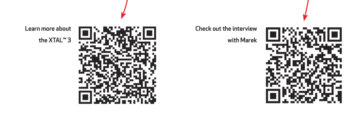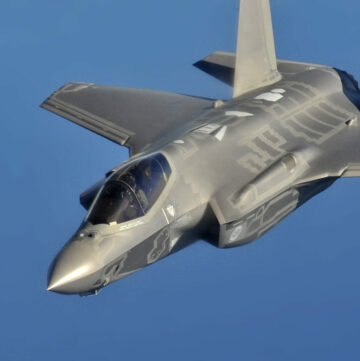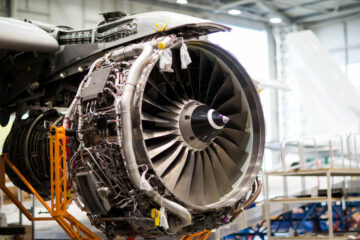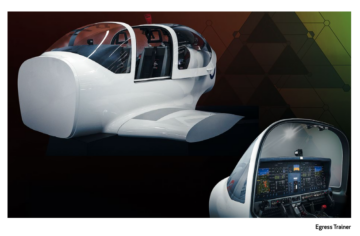In an era where the fusion of technology and defense strategy defines the contours of global security, Major General Petr Čepelka, commander of the Czech Air Force since 01 November 2022, embodies the leadership essential for navigating this complex terrain. His foundation in Aircraft and Missile Technology, obtained from the Military Aviation College Košice in 1991, combined with his ascent from a helicopter pilot to a position of strategic command, underscores the depth of his expertise and experience. Čepelka’s operational leadership in Afghanistan, particularly as Deputy Commander of the Czech Air Mentoring Team Kabul in 2010-2011, and his subsequent roles in shaping military aviation policy, exemplify his direct involvement in integrating advanced technologies with military operations. Promoted to Major General on 08 May 2023, his trajectory illustrates a profound understanding of the challenges and opportunities that emerging and disruptive technologies present to modern military forces. This exclusive interview offers invaluable insights into the strategic imperatives driving NATO’s technological edge in an uncertain global landscape. The core question that emerges is: Which new technologies are most significantly shaping modern defense strategies, and how are they altering the landscape of global security?
What is the historical background and significance of technological superiority for NATO?
Technology is central to today’s geopolitical competition and to the future of our national security, economy and democracy. (National Security Strategy of the USA, 2022)Maintaining a technological edge has always been a fundamental aspect of NATO’s defense strategy. NATO, as a military alliance formed in 1949, has consistently recognized the importance of technological superiority in deterring potential adversaries, ensuring interoperability among member states’ armed forces, and maintaining readiness to respond to emerging security challenges. Throughout its history, NATO has emphasized the need for technological innovation, modernization and superiority to stay ahead of potential adversaries, adapt to emerging challenges and maintain its effectiveness as a defense alliance.

NATO member states continuously adapt their strategies, doctrines, and capabilities to address evolving security threats, including those posed by rapid technological advancements.The Alliance conducts regular assessments of emerging technologies and trends to inform strategic planning and investment decisions and there have been many white papers written at NATO ACT to analyze military implications of various technologies, how these capabilities could address potential capability gaps and affect existing doctrines.
What are China’s main technological initiatives and investments, and how do they affect global security?
Several countries, regions and actors around the world, some of them our adversaries and peer competitors, have recognised the very same importance of technological advancement investing heavily in research and development across multiple sectors and have established themselves as a major player or even leader in emerging and disruptive technologies (EDT), shaping and challenging the global technological landscape now.

The Chinese government’s Made in China 2025 initiative aims to achieve dominance in key technology areas such as artificial intelligence (AI), robotics, advanced manufacturing, and 5G telecommunications. China is also actively harnessing EDT to advance its military weaponry and systems, simultaneously modernising and strengthening its overall military capacity investing massively in AI and machine learning for military applications, including autonomous systems and decision-making algorithms, but we can also see China making significant strides in quantum technologies, including quantum computing, cryptography and communication.Another area where is China at the forefront is hypersonic weapon development, including hypersonic missiles and glide vehicles, space and anti-satellite technologies, biotechnological advancements and electromagnetic spectrum operations. Overall, China’s strategic investments in EDT reflect its ambition to become a dominant force in future warfare and secure its geopolitical interests as well as commitment to modernising its armed forces and challenging established military powers on the global stage.What is Russia’s approach to emerging and disruptive technologies, and what impact does it have on international security?Russia ranks among the countries actively involved in the development of EDT and possesses strengths in various domains such as air and space technology, nuclear energy, cybersecurity and information technology, AI and robotics. These technological capabilities are not only utilised for civilian applications but are also leveraged by Russia to develop advanced military weapons and systems, modernise and enhance its military capabilities.

Russia has demonstrated its willingness to employ advanced military technologies to achieve its strategic goals and protect its interests, both domestically and internationally. This includes the development and deployment of advanced aircraft, missile systems, cyber capabilities, unmanned aerial vehicles and other military assets.We have seen Russia showcasing such capabilities in the Syrian Civil War and its involvement in the ongoing brutal war in eastern Ukraine, which has become a test bed not only for Russian weapons but especially Ukrainian and Western battlefield innovation ranging from all kinds of drones, to AI-enhanced weapon systems, cyber-weapons, intelligence, surveillance, targeting and situational awareness systems and other sophisticated, cutting-edge capabilities. As Mykhailo Fedorov, Ukraine’s vice prime minister and minister of digital transformation, put it: “Ukraine is the best test ground, as we have the opportunity to test all hypotheses in battle and introduce revolutionary change in military tech and modern warfare” and Gen. Philippe Lavigne, Supreme Allied Commander Transformation, accentuated “This is the future operating environment”.Then there are the non-state actors, including terrorist organisations, criminal networks, hacktivism groups, and rogue individuals, who can potentially acquire some of the EDT such as cyber weapons, UAS, new missile technologies, advanced encryption and communication tools through various means, which would present new threats both militarily and to civilian society.
What measures is NATO taking to maintain its technological edge and address new challenges?
During the NATO Defense Ministerial held in October 2019, there was apprehension voiced regarding NATO’s potential loss of its technology edge. As a result, the Defense Ministers have directed NATO bodies to undertake several activities and studies aimed at tackling the issue. They have sought input from the industry to understand how EDT affect defence operations and the development of military capabilities and have urged NATO member nations to intensify their endeavours related to EDT.

In support of these objectives, NATO have adopted the EDT Roadmap in 2019 to bring wide attention to the issue and set planning and development milestones for the stakeholders. It has also introduced the first six NATO-recognised EDT. This list has been further expanded in 2022 adding another two EDT and then revised again in 2023 in order to reflect evolutions in the technological domain and increase awareness across NATO. This only shows how dynamic and fast paced is this area of development. The list of active NATO-adopted EDT now comprises Artificial Intelligence, Autonomy, Quantum Technologies, Space Technologies, Hypersonic and new Missile Technologies, Biotechnology and Human Augmentation/ Enhancement, Novel Materials and Manufacturing, Energy and Propulsion and Next Generation Communication Networks. All this effort ultimately resulted in several new strategies, concepts and initiatives to help guide NATO’s development of EDT policy in specific subject areas such as a Strategy on emerging and disruptive technologies endorsed in 2021 followed by NATO War-fighting Capstone Concept (NWCC), also approved in 2021, or Multi-domain Operations (MDO), approved in 2023. They all harness EDT as the critical enablers for maintaining a technology advantage to support war-fighting and rely on advanced technologies such as artificial intelligence, machine learning, unmanned systems and hypersonic weapons to enhance military capabilities and enable operations in contested and denied environments.The list of EDT can, however, vary throughout the world due to several factors, including differences in technological infrastructure, investment priorities, research and development capabilities, regulatory environments, and societal needs just like the consequences of both state and non-state actors developing or acquiring EDT can be severe and wide-ranging. They can pose significant threats to national security, individual and collective defence structures as well as risks of terrorism, cyberattacks, sabotage, and espionage and disruption of critical infrastructure leading to erosion of trust and stability in society, confidence in government institutions and exacerbation of social tensions and conflicts. This underscores the importance of understanding and addressing the implications of state and non-state actors’ military advancements for regional and global security dynamics.Technological advancement of some of the leaders in this area, such as China or Russia, has become disturbing and indeed a topic of concern for various stakeholders, including governments, industries and military organisations. This concern extends beyond just simply economic interests to geopolitical influence and national security considerations. We can see these issues addressed today in allied and national top strategic documents such as the US National Security Strategy or Security and Defense Strategies of the Czech Republic to name a few, various EU policies, initiatives, and regulatory frameworks aimed at fostering research, innovation, competitiveness and responsible development and to mitigate risks associated with EDT (Horizon Europe, Digital Single Market Strategy, the AI Act, the Cybersecurity Act etc.), but also through cooperation with the big tech companies such as Amazon, Google, Microsoft, Starlink, Meta as we could see during the recent Munich Security Conference.The concerns, however, have also been raised within public and private sector, academia and civil society e.g. the China Strategy Group project, Common Code: An Alliance Framework for Democratic Technology Policy etc.The EDT present both risks and opportunities for NATO and Allies. That’s why the Alliance is working with public and private sector partners, academia and civil society to develop and adopt new technologies, establish international principles of responsible use and maintain NATO’s technological edge through innovation.Addressing the risks associated with non-state actors’ access to EDT on the other hand requires a multifaceted approach across the globe involving international cooperation, enhanced security measures, robust regulation and oversight, investment in counterterrorism efforts, and efforts to address underlying grievances and vulnerabilities that fuel extremism and illicit activities.In summary, technological advances introduce both opportunities and challenges for national security and defence. It requires a proactive and adaptive approach to defence planning, embracing innovation while also addressing the evolving nature of threats in the modern era. Coordination and collaboration across multiple domains and international partnerships are essential for effective defence strategies in this rapidly changing landscape.
How important is to be mindful that the technological advances we see today will inevitably change and develop in the future and shape the security environment. How important is to maintain a technology edge?
Being mindful of the dynamic and evolving nature of technological advances is crucial when considering their impact on the security environment and fundamental for effective defence planning and strategy development. An ongoing commitment to monitoring, understanding, and adapting to technological changes ensures that security measures remain relevant and resilient in the face of evolving threats.
In conclusion, maintaining a technology edge is critical for NATO’s credibility, deterrence posture, interoperability, and effectiveness in countering emerging threats. It allows NATO to adapt to evolving security challenges, enhance its strategic advantage, and fulfil its role as a leading defence alliance committed to the security of its member states. And when you see Xi Tin Ping showcasing his favorite read to be Pedro Domingos’s The Master Algorithm or Brett King’s Augmented: Life in the Smart Lane or hear Vladimir Putin declare “Whoever leads in AI will rule the world” it is absolutely clear that this is one edge we cannot afford to dull.
Interviewed and edited by: Katerina Urbanova
- SEO Powered Content & PR Distribution. Get Amplified Today.
- PlatoData.Network Vertical Generative Ai. Empower Yourself. Access Here.
- PlatoAiStream. Web3 Intelligence. Knowledge Amplified. Access Here.
- PlatoESG. Carbon, CleanTech, Energy, Environment, Solar, Waste Management. Access Here.
- PlatoHealth. Biotech and Clinical Trials Intelligence. Access Here.
- Source: https://aero-space.eu/2024/04/16/petr-cepelka-steering-through-the-technological-tides-of-defense/
- :has
- :is
- :not
- :where
- 01
- 08
- 19
- 1949
- 20
- 2019
- 2021
- 2022
- 2023
- 2025
- 25
- 5G
- a
- absolutely
- Academia
- access
- ace
- Achieve
- acquire
- acquiring
- across
- Act
- active
- actively
- activities
- actors
- adapt
- adapting
- adaptive
- adding
- address
- addressed
- addressing
- adopt
- adopted
- advance
- advanced
- advancement
- advancements
- advances
- ADvantage
- Aerospace
- affect
- afford
- AFGHANISTAN
- again
- ahead
- AI
- AI Act
- aimed
- aims
- AIR
- Air Force
- aircraft
- algorithm
- algorithms
- All
- Alliance
- allows
- also
- always
- Amazon
- ambition
- among
- an
- analyze
- and
- Another
- applications
- approach
- approved
- ARE
- AREA
- areas
- armed
- around
- artificial
- artificial intelligence
- Artificial intelligence (AI)
- AS
- ascent
- aspect
- assessments
- Assets
- associated
- At
- attention
- augmented
- autonomous
- autonomous systems
- Autonomy
- aviation
- awareness
- background
- Battle
- Battlefield
- BE
- become
- been
- BEST
- Beyond
- Big
- big tech
- Big Tech Companies
- biotechnology
- bodies
- both
- bring
- but
- by
- CAN
- cannot
- capabilities
- capability
- Capacity
- central
- central europe
- challenges
- challenging
- change
- Changes
- changing
- China
- Chinas
- chinese
- civil
- civilian
- clear
- code
- collaboration
- Collective
- College
- combined
- command
- commitment
- committed
- Common
- Communication
- Companies
- competition
- competitiveness
- competitors
- complex
- comprises
- computing
- concept
- concepts
- Concern
- Concerns
- conclusion
- conducts
- Conference
- confidence
- conflicts
- Consequences
- considerations
- considering
- consistently
- continuously
- cooperation
- coordination
- Core
- could
- countering
- countries
- Credibility
- Criminal
- critical
- Critical Infrastructure
- crucial
- cryptography
- cutting-edge
- cyber
- cyberattacks
- Cybersecurity
- Czech
- czech republic
- Decision Making
- decisions
- defence
- Defense
- Defines
- Democracy
- democratic
- demonstrated
- denied
- deployment
- depth
- deputy
- develop
- developing
- Development
- differences
- digital
- Digital Transformation
- direct
- directed
- Disruption
- disruptive
- do
- documents
- does
- domain
- domains
- domestically
- Dominance
- dominant
- driving
- Drones
- due
- during
- dynamic
- dynamics
- e
- eastern
- Economic
- economy
- Edge
- edited
- Effective
- effectiveness
- effort
- efforts
- embodies
- embracing
- emerges
- emerging
- emerging technologies
- emphasized
- enable
- encryption
- endeavours
- endorsed
- energy
- enhance
- enhanced
- enhancement
- ensures
- ensuring
- Environment
- environments
- Era
- especially
- espionage
- essential
- establish
- established
- etc
- EU
- Europe
- Even
- evolutions
- evolving
- Exclusive
- exemplify
- existing
- expanded
- experience
- expertise
- extends
- extremism
- Face
- factors
- FAST
- Favorite
- few
- First
- followed
- For
- Force
- Forces
- forefront
- formed
- fostering
- Foundation
- Framework
- frameworks
- from
- Fuel
- fundamental
- further
- fusion
- future
- future operating
- gaps
- Gen
- General
- generation
- geopolitical
- Global
- globe
- Goals
- Government
- Governments
- Ground
- Group
- Group’s
- guide
- hacktivism
- hand
- harness
- Harnessing
- Have
- hear
- heavily
- Held
- helicopter
- help
- High
- his
- historical
- history
- horizon
- How
- However
- HTTPS
- human
- illicit
- illustrates
- Impact
- implications
- importance
- important
- in
- includes
- Including
- Increase
- indeed
- individual
- individuals
- industries
- industry
- inevitably
- influence
- inform
- information
- information technology
- Infrastructure
- Initiative
- initiatives
- Innovation
- input
- insights
- institutions
- Integrating
- Intelligence
- interests
- International
- internationally
- Interoperability
- Interview
- into
- introduce
- introduced
- invaluable
- investing
- investment
- Investments
- involved
- involvement
- involving
- issue
- issues
- IT
- ITS
- just
- Key
- kinds
- landscape
- Lane
- leader
- leaders
- Leadership
- leading
- Leads
- learning
- leveraged
- Life
- like
- List
- loss
- machine
- machine learning
- made
- Main
- maintain
- maintaining
- major
- Making
- manufacturing
- many
- Market
- massively
- master
- materials
- max-width
- May..
- means
- measures
- member
- mentoring
- Meta
- Microsoft
- Milestones
- Military
- Military Applications
- military tech
- minister
- ministers
- missiles
- Mitigate
- Modern
- modernization
- monitoring
- most
- multifaceted
- multiple
- Munich
- Mykhailo Fedorov
- name
- National
- national security
- Nations
- Nature
- navigating
- Need
- needs
- networks
- New
- New technologies
- next
- novel
- November
- now
- nuclear
- Nuclear Energy
- objectives
- obtained
- october
- of
- Offers
- on
- ONE
- ongoing
- only
- operating
- operational
- Operations
- opportunities
- Opportunity
- or
- order
- Organisations
- Other
- our
- overall
- Oversight
- paced
- papers
- particularly
- partners
- partnerships
- peer
- Philippe
- pilot
- ping
- planning
- plato
- Plato Data Intelligence
- PlatoData
- player
- policies
- policy
- pose
- posed
- position
- possesses
- potential
- potentially
- powers
- present
- Prime
- prime minister
- principles
- private
- private sector
- Proactive
- profound
- project
- Promoted
- propulsion
- protect
- public
- put
- Putin
- Quantum
- quantum computing
- question
- raised
- ranging
- ranks
- rapid
- rapidly
- Read
- Readiness
- recent
- recognised
- recognized
- reflect
- regarding
- regional
- regions
- regular
- Regulation
- regulatory
- related
- relevant
- rely
- remain
- Republic
- requires
- research
- research and development
- resilient
- Respond
- responsible
- result
- resulted
- revolutionary
- risks
- roadmap
- robotics
- robust
- Role
- roles
- Rule
- Russia
- russian
- same
- sector
- Sectors
- secure
- security
- security measures
- Security threats
- see
- seen
- set
- several
- severe
- Shape
- shaping
- showcasing
- Shows
- significance
- significant
- significantly
- simply
- simultaneously
- since
- single
- SIX
- smart
- Social
- societal
- Society
- some
- sophisticated
- sought
- Space
- specific
- Spectrum
- Stability
- Stage
- stakeholders
- starlink
- State
- States
- stay
- steering
- Strategic
- strategies
- Strategy
- strengthening
- strengths
- strides
- structures
- studies
- subject
- subsequent
- such
- SUMMARY
- superiority
- support
- Supreme
- surveillance
- Systems
- tackling
- taking
- targeting
- team
- tech
- tech companies
- technological
- Technologies
- Technology
- telecommunications
- tensions
- terrain
- Terrorism
- terrorist
- test
- that
- The
- The Future
- The Landscape
- the security
- the world
- their
- Them
- themselves
- then
- There.
- These
- they
- this
- those
- threats
- Through
- throughout
- tides
- to
- today
- today’s
- tools
- top
- topic
- trajectory
- Transformation
- Trends
- Trust
- two
- Ukraine
- Ukraines
- Ukrainian
- Ultimately
- Uncertain
- underlying
- underscores
- understand
- understanding
- undertake
- urged
- us
- USA
- use
- various
- vary
- Vehicles
- very
- vice
- Vladimir Putin
- Vulnerabilities
- war
- was
- we
- Weapons
- WELL
- Western
- What
- What is
- when
- which
- while
- white
- WHO
- why
- wide
- will
- Willingness
- with
- within
- working
- world
- would
- written
- xi
- you
- zephyrnet










